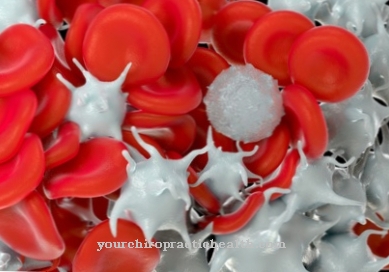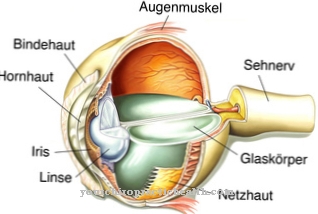Of the Sense of direction is not a single one of the six human senses. Rather, it is composed of several of these sensory perceptions.
In contrast to all other senses, the sense of direction can be trained and learned. Since the modern age, however, the general ability to orientate people has declined.
What is the sense of direction?

The sense of direction is also known as the sense of space or spatial orientation. It is only indirectly part of the six human sensory perceptions. The structure is not about an independent sense, but about an interplay of several senses. The sense of sight as well as the sense of hearing, the sense of smell, the sense of touch, the sense of balance and the sense of muscles (depth sensitivity) are involved in the sense of orientation.
In addition to humans, animals also have a sense of space that enables them to orientate themselves and move in a coordinated manner. Unlike humans, many animals are equipped with an additional sense of vibrations, magnetic fields and polarization patterns. These additional perceptions go into her sense of direction.
Unlike all other senses, spatial orientation can be learned and trained to a high degree. The basic structure is innate through the anatomical structures of the eyes, muscles and ears. But since memory and attention also play a role in spatial orientation, the sense of direction can be improved through certain exercises.
Function & task
Without the sense of direction, people would no longer be able to orientate themselves in space. The coordinated movement through space also depends on this sensory structure. A large part of spatial orientation is only learned through targeted movement in space.
People learn to orientate themselves in small areas in the first years of their lives. Later on, the learning of geographical orientation follows, which then contributes as memory content to the general sense of direction. For close-up orientation, the spatial position plays a role, i.e. the position and posture of your own body in space.
In particular, the sense of sight and the sense of balance allow the assessment of one's own spatial position. The sense of balance serves in particular to establish and maintain one's own posture and to take into account environmental forces such as gravity. The interplay of this sensory perception with the visual perception can be used to assess the angles and inclinations as well as the plumb lines of one's own spatial position.
The sense of touch also plays a role in determining one's own spatial position, as it calculates, among other things, one's own center of gravity. This calculation takes place on the basis of the pressure receptors on the soles of the feet and is included in the spatial position.
The close connection of the aforementioned sensory structures with deep sensitivity ultimately protects people from falling and stumbling. The deep sensitivity is one of the fastest senses and is controlled by the cerebellum so that the brain can automatically initiate a protective muscle response as soon as the balance organ reports an abrupt change in posture. For example, people do not automatically fall to the ground if they stumble, but can often still catch themselves by automatically putting their foot forward.
The perception of spatial position is mainly controlled subconsciously. The large-scale perception, on the other hand, is more conscious. With this type of orientation, the ability to think and alert play an increased role.
The memory of distinctive spatial points, such as landscape phenomena, buildings or waymarks, is incorporated into the spatial location. Large-scale orientation is therefore only learned.
You can find your medication here
➔ Medicines for concentration and orientation disordersIllnesses & ailments
Since the sense of direction requires practice and training, locomotion in space is essential for this sensory structure. As described, a large part of the sense of direction is learned. If a person does not move sufficiently in space at an early age, the sense of direction can recede accordingly.
The sciences have therefore meanwhile been able to identify a decreasing ability to orientate themselves in modern humans. This decrease is due to modern times, which make orientation and non-motorized locomotion no longer necessary.
The sense of direction can cause discomfort with unusual or unfamiliar spatial movements. When diving and flying, for example, it is difficult for the sense of direction to determine the spatial position and general orientation is disturbed. Underwater, the changed perception of space is responsible for the symptoms. When flying, however, the problems go back to the turning movements. In particular, the sense of balance, which is relevant for the sense of direction, can no longer be adjusted smoothly in these situations. The consequences are vertigo, dizziness, nausea, and confusion.
Long-term orientation disorders can be both psychological and organic. Chemical exposure, drug administration and other intoxications can, for example, trigger an orientation disorder, as they stress the orientation center of the brain.
On the other hand, actual damage to the brain can also be present, for example from Alzheimer's, Parkinson's or brain lesions from other causes. Depending on which brain centers or individual perception centers of the brain are affected by the damage, an orientation disorder can express itself in different ways. Persistent dizziness can already be a disorientation, for example.
























.jpg)



